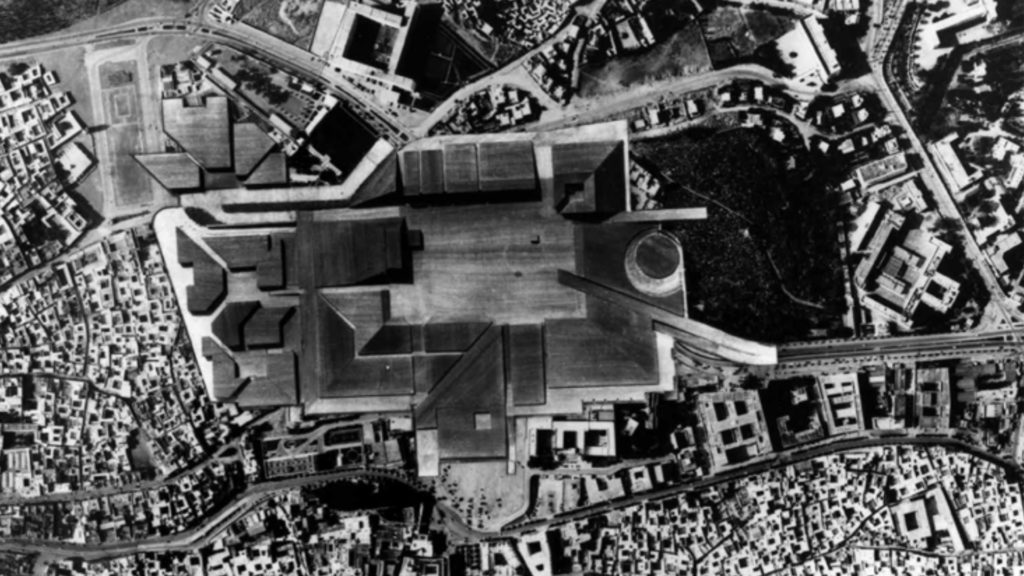Arabian Cities. Ludovico Quaroni and the Islam spaces

for young people aged between 18 and 25 (not yet turned 25); for groups of 15 people or more; La Galleria Nazionale, Museo Ebraico di Roma ticket holders; upon presentation of ID card or badge: Accademia Costume & Moda, Accademia Fotografica, Biblioteche di Roma, Centro Sperimentale di Cinematografia, Enel (for badge holder and accompanying person), FAI – Fondo Ambiente Italiano, Feltrinelli, Gruppo FS, IN/ARCH – Istituto Nazionale di Architettura, Sapienza Università di Roma, LAZIOcrea, Palazzo delle Esposizioni, Amici di Palazzo Strozzi, Accademia Nazionale di Santa Cecilia, Scuola Internazionale di Comics, Teatro Olimpico, Teatro dell’Opera di Roma, Teatro di Roma, Università degli Studi di Roma Tor Vergata, Youthcard; upon presenting at the ticket office a Trenitalia ticket to Rome purchased between 27 November 2024 and 21 April 2025
valid for one year from the date of purchase
minors under 18 years of age; upon presentation of disability card or accompanying letter from hosting association/institution for: people with disabilities and accompanying person, people on the autistic spectrum and accompanying person, deaf people, people with cognitive disabilities and complex communication needs and their caregivers, people with serious illnesses and their caregivers, guests of first aid and anti-violence centres and accompanying operators, residents of therapeutic communities and accompanying operators; EU Disability Card holders and accompanying person; MiC employees; myMAXXI cardholders; registered journalists with a valid ID card; European Union tour guides and tour guides, licensed (ref. Circular n.20/2016 DG-Museums); 1 teacher for every 10 students; AMACI members; CIMAM – International Committee for Museums and Collections of Modern Art members; ICOM members; journalists (who can prove their business activity); European Union students and university researchers in art history and architecture, public fine arts academies (AFAM registered) students and Temple University Rome Campus students from Tuesday to Friday (excluding holidays); IED – Istituto Europeo di Design professors, NABA – Nuova Accademia di Belle Arti professors, RUFA – Rome University of Fine Arts professors; upon presentation of ID card or badge: Collezione Peggy Guggenheim a Venezia, Castello di Rivoli Museo d’Arte Contemporanea, Sotheby’s Preferred, MEP – Maison Européenne de la Photographie; on your birthday presenting an identity document
for groups of 12 people in the same tour; myMAXXI membership card-holders; registered journalists with valid ID
under 14 years of age
disabled people + possible accompanying person; minors under 3 years of age (ticket not required)
MAXXI’s Collection of Art and Architecture represents the founding element of the museum and defines its identity. Since October 2015, it has been on display with different arrangements of works.


18 Mar 2025 07.00 pm
Le ConversazioniJonathan Safran Foerwith Antonio Monda
23 Mar 2025 04.00 pm
musicElectronic ExpressionsApogeo
23 Mar 2025 05.00 pm
CreAzioneThe Brutalistby Brady Corbet
25 Mar 2025 06.00 pm
stories of artLecture on yellowwith Angela Vettese
27 Mar 2025 07.00 pm
Le ConversazioniPupi Avatiwith Antonio Monda
30 Mar 2025 04.00 pm
musicElectronic ExpressionsMateria
30 Mar 2025 05.00 pm
CreAzioneLeopardiby Mario Martone
Graziella Lonardi Buontempo hall – Free Entrance subject to availability
10 seats reserved for holders of the myMAXXI card by sending an email to mymaxxi@fondazionemaxxi.it up until the day preceding the event, subject to availability
A pluralist debate to trace the thought and action of the Roman architect in this part of the world.
For Ludovico Quaroni, the meeting with the Eastern world – especially Islamic – is the beginning of a revelation. Back from his imprisonment in India, Quaroni recognizes a vital role for the East: the ability to introduce man to the environment, essential for his approach to architecture. In the framework of a research promoted by the Architecture and Design Department at “La Sapienza” University, “Arabian cities” brings together the protagonists of the facts with Quaroni’s collaborators and students. Since the Second World War, the Islamic world has been to Quaroni and his working group the ground where to graft a principle of knowledge, in the willingness to seize the professional opportunities and research in Islamic countries – Iran, Tunisia, Syria, and Yemen – as a source of inspiration and cultural exchange.
Introduced by
Margherita Guccione Direttor MAXXI Architettura
Orazio Carpenzano Sapienza Università di Roma
Alessandra Capuano Sapienza Università di Roma
Speakers
Pippo Ciorra Senior Curator MAXXI Architettura / Università degli Studi di Camerino
Laura Valeria Ferretti Sapienza Università di Roma
Mehdi Kowsar Università di Teheran
Ludovico Micara Università degli Studi di Chieti-Pescara “G. D’Annunzio”
Maria Luisa Neri Università degli Studi di Camerino
Attilio Petruccioli Sapienza Università di Roma
Lucio Valerio Barbera Sapienza Università di Roma
Moderated by
Filippo De Dominicis Sapienza Università di Roma
Curated by Filippo De Dominicis in collaboration with DiAP – Department of Architecture and Design / “Sapienza” University of Rome